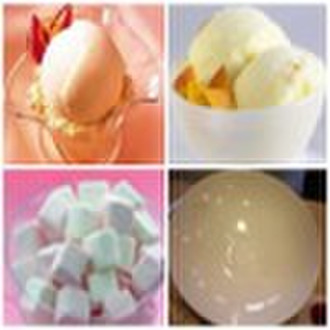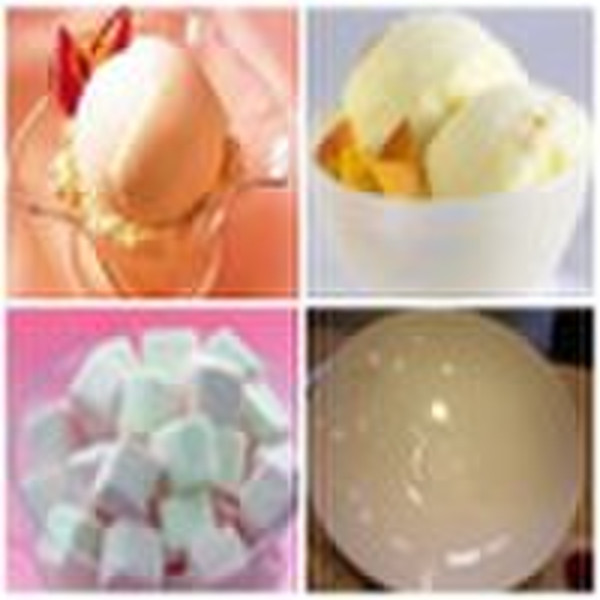食物的凝胶
原价: 1 000 USD
崇义县, 中国
生产能力:
150 吨 / 月

Sunny Yang
联系人姓名
基本信息
| 化学文摘社编号. | 9000-70-8 |
|---|---|
| 其他的名字 | food gelatin |
| 小额信贷 | C6H12O6 |
| Einecs编号没了 | 232-554-6 |
| 纯洁的 | 80%-90% |
| 出生地 | Hebei China (Mainland) |
Food Gelatin is light yellow to yellow fine grain. This product consists of 18 types of amino acid Production Process Pre-treatment First of all, the fat and minerals are removed from the raw materials. Afterwards two different pre-treatment methods are used, depending on the raw material and on the final application of the gelatine. Alkaline procedure The connective tissue of cattle is highly interconnected and is therefore pre-treated with lime in a process lasting several weeks. This brings about a gentle change to the collagen structure. After this treatment, the collagen is soluble in warm water and can thus be separated from the rest of the raw material. Acid procedure The collagen connective tissue from pigskin is not so heavily interconnected. Here, a one-day acid treatment with subsequent neutralization and the intensive rinsing out of the salts is sufficient to extract the collagen. Extraction The pre-treated raw materials are now treated with hot drinking water and extracted in several stages. The temperature of the hot water is a parameter for the jelly strength: the lower the temperature of the water, the higher the gel strength (bloom value) of the extracted gelatine. Cleaning The extracted solutions are freed of traces of fat and fine fibres in high-performance separators. Even the finest impurities are removed by filtration, in a similar way to the beverages industry. In a last purification stage the gelatine is freed of calcium, sodium, residual acid and other salts. Thickening The gelatine solution is now concentrated in vacuum evaporators and thickened to form a honey-like solution. Drying The highly concentrated gelatine solutions are sterilized, cooled, set and dried under strict hygienic conditions. In this process, “gel noodles” are formed that are ground into grains when dry. The quality and purity of the gelatine is ensured by detailed quality control. All of these steps are indispensable for gelatine manufacture and have been used for decades to manufacture high-quality gelatine. Gelatin as a Food Ingredient Gelatin is truly remarkable in terms of its many functional properties in food applications. It can function as a gel, a whipping agent to foam and aerate, a protective colloid, a binding agent, a film former, a thickener, a processing aid, an emulsifier, a stabiliser or as an adhesive. In some applications, several of these functions are called upon together. Gelatin desserts Gelatin desserts are perhaps the most widely known use of gelatin to people of all ages. They can be traced back to 1845, when a US patent was issued. Over 150 years later, they remain popular worldwide. Confectionery Gelatin confections are typically made from a base of sugar, corn syrup and water. To this are added flavour, colours and texture modifiers. Gelatin is widely used in confectionery because it gels, foams or solidifies into a piece that dissolves slowly in the mouth, gently releasing flavours and creating a smooth taste sensation. Dairy products Gelatin acts as both a texturiser and a stabiliser in many dairy products, including yoghurts and supreme ice creams. In yoghurts it helps avoid the floury texture of starches, while in ice creams it controls the excess formation of ice crystals. In both yoghurt and ice cream, as with similar dairy desserts or iced confections, gelatin melting at body temperature provides a smooth creamy sensation and allows the full release of flavours and aromas. Gelatin in meats There are jellied meat products of many kinds. For example, gelatin is use in gel aspics, glazed and canned meats. Its main function is to absorb meat juices and give form and structure to products that would otherwise fall apart. Beverages By acting as a coagulant, gelatin can be used to precipitate impurities during the manufacture of wine, beer, cider and juices. It has the advantages of unlimited shelf life in its dry form, ease of handling, rapid preparation and brilliant clarification. Low fat and 'Lite' foods Gelatin's unique properties are utilised in the production of many 'lite' foods and items such as margarine and other low fats. The appearance of the product is light yellow to yellow fine grain. This product is mainly used in soft and hard capsules, sugar coating tablets. Its voluntary standard are QB2354-98 standard and the standard authorized by the Ministry of Health. Our company is appointed to handle the SGS, ITS quality certificate and CIQ veterinarian certificate and the note for changing the certificate of letting pass.
交货条款及包装
Packaging Detail: 1)Kraft bag outside and plastic bag inside2)Woven bag outside and plastic bag inside Delivery Detail: 15-30DAYS
端口: TIANJIN
付款条款
Letter of credit
Telegraphic transfer
-
支付方式
我们接受:









